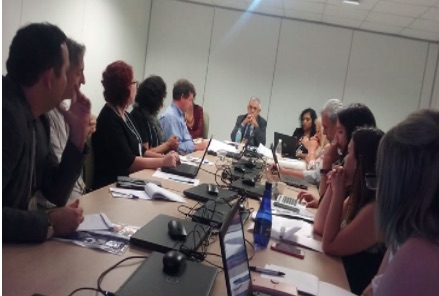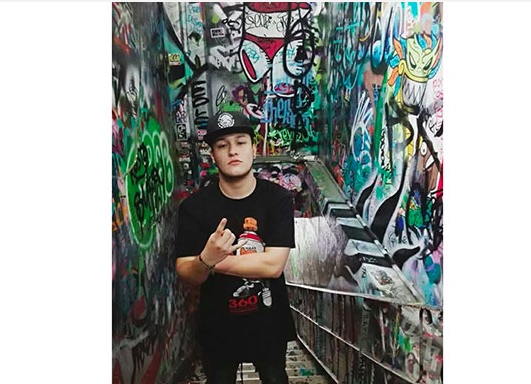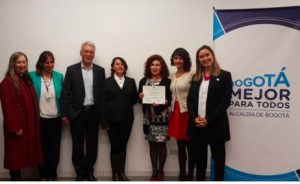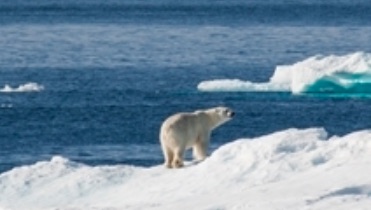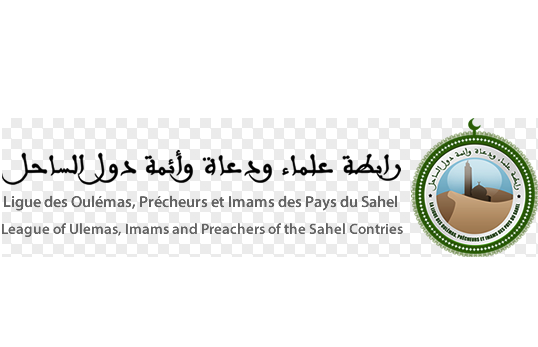. . WOMEN’S EQUALITY . .
An article from the Nobel Women’s Initiative
Bertha Zúñiga Cáceres, general coordinator of the Civic Council of Popular and Indigenous Organizations of Honduras [COPINH]. COPINH fights for the environmental, cultural, social, health, economic and educational rights of Honduras’s largest indigenous group, the Lenca people.

Photo by Mel Mencos
Bertha Zúñiga Cáceres was born to what she’s described as “a people of great dignity and strength.” She also was born into struggle. She was just a toddler when her mother, Berta Cáceres, one of Honduras’s most high-profile activists, founded COPINH to defend the land rights of the country’s Indigenous Lenca from exploitation by mining, dam-building and logging interests. (She also advocated against racism, sexual discrimination and the victimization of women.) Her mother, Zúñiga Cáceres recalled, “instilled in us from a very early age that we must continue forward defending the rights of our people.”
The fight was intense. Extractive industry companies hold concessions on more than 30 percent of Honduras’s land. With her siblings, Zúñiga Cáceres went to marches and protests – she learned young how to best avoid breathing in tear gas – read about racism, and spent time in the Indigenous communities that were her mother’s focus. The experience forever shaped her. As she put it, “To make the ancestral struggles of the communities yours, is to assume a way of seeing and being in the world.”
Zúñiga Cáceres also learned early that in Honduras speaking truth to power is a dangerous act. Her mother fought the construction of a hydroelectric project with a series of dams that would dry up the Gualcarque River, which is both sacred to Lenca communities and vital to their survival. Death threats were constant. Later Zúñiga Cáceres acknowledged that the danger in which her family lived “was so frequent that it became normal.”
The danger also was real. At least 124 environmental and land activists have been murdered in Honduras since 2009; Global Witness calls the country the most dangerous in the world in which to defend natural resources. On March 2, 2016, one year after Berta Cáceres won the prestigious Goldman Environmental Prize—sometimes called the Green Nobel—and one day before her 45th birthday, gunmen pushed into her home and shot her to death.
(Article continued in right column)
Question for this article
Do women have a special role to play in the peace movement?
Indigenous peoples, Are they the true guardians of nature?
(Article continued from left column)
Zúñiga Cáceres, who is sometimes called Bertita, or Little Bertha, suspended her graduate studies and went to work on two fronts: to find and bring her mother’s killers to justice, and to continue her mother’s fight against the dam and for a more general social justice—a struggle, she’s said, that “goes beyond one person or one single individual.”
Neither has been easy. Eight people are in custody in relation to the killing of Berta Cáceres, two with links to the company trying to build the dam, three with military ties. A recent independent investigation by five international human rights experts revealed evidence that both state agents and the hydroelectric company’s executives and employees had taken part in planning, executing and cover up the murder. But in Honduras almost no one gets punished for any murder, and the Honduran government has made it clear that going after who planned or ordered that Berta be killed is not likely.
Zúñiga Cáceres, who assumed leadership of COPINH last summer, has called for a full and independent investigation into the assassination of her mother – or as she put it in 2016, “We want to set a precedent of justice in a country where there is none.” She also began to campaign in support of pending U.S. legislation that would suspend all military aid to Honduras until the country demonstrates that it has taken action on the unlawful killing of human rights activists.
She soon discovered the danger in her own outspokenness. Just weeks after Zúñiga Cáceres assumed leadership of COPINH, she and two colleagues survived an attack by four men who followed them home from a visit to a community in central Honduras, attacked with rocks and machetes, then tried to force their vehicle off a cliff.
Death did not silence the mother, Berta Cáceres: during her funeral procession, a crowd of thousands followed chanting “Berta vive, la lucha sigue!” COPINH’s fight, Zúñiga Cáceres has said has become “a universal struggle…a struggle that is modestly and humbly taken over by a community.” Her mother, she says, did not die, “but entered the earth, like a seed.”
Like her mother, Zúñiga Cáceres will not be silenced either. As she wrote in a column published last March, in Spain’s El País, “If I could tell my mother anything now, it would be ‘don’t worry: your fight lives on in me, in my brothers and sisters, and in our community.’”
(Thank you to Janet Hudgins, the CPNN reporter for this article.)
